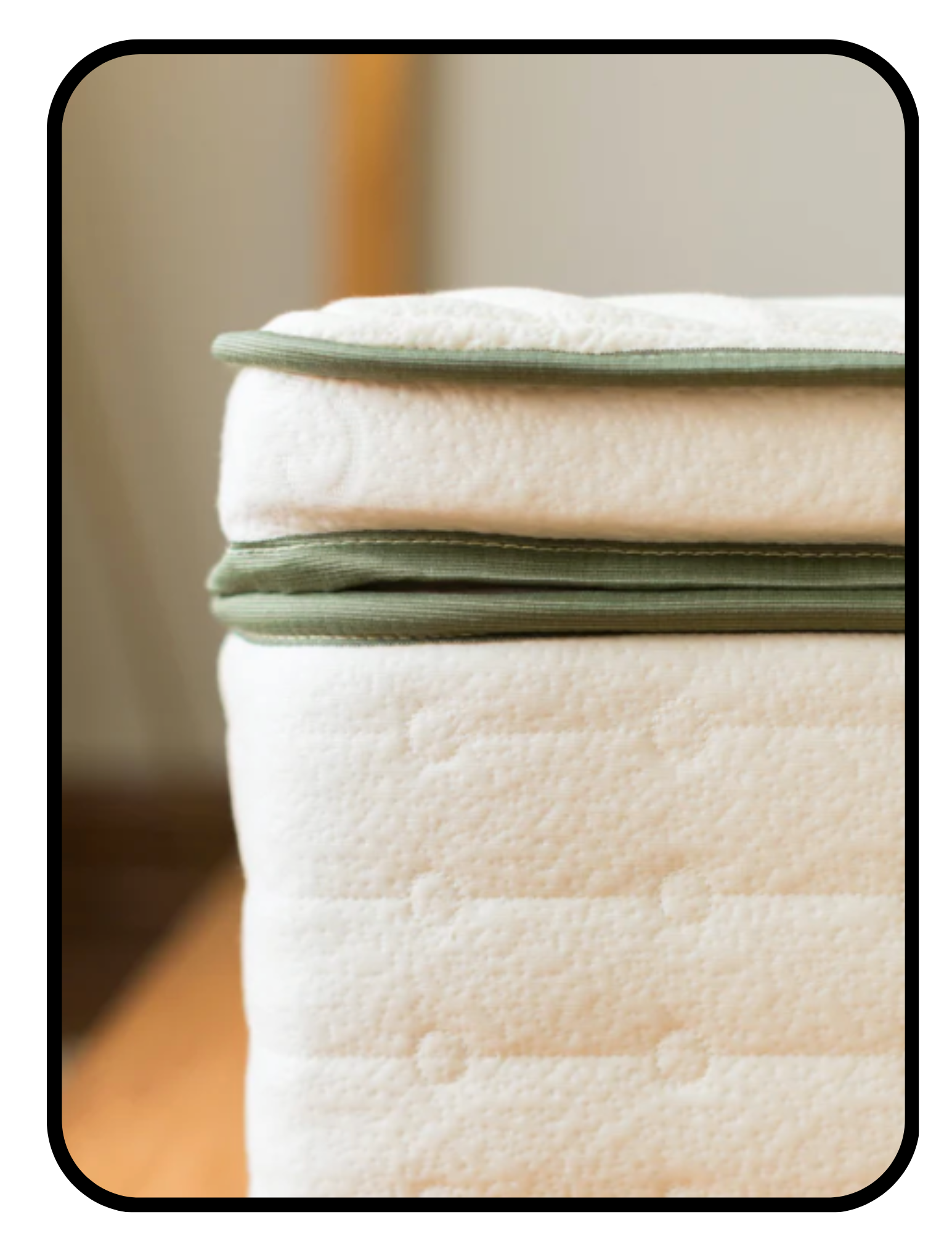Shop by Room Whole Home About ➜ Learn ➜ PFAS
PFAS
Click bolded statements for links to research.
What are PFAS?
Usually pronounced “P-foz,” PFAS are actually a large group of chemicals— what they all have in common is a similar chemical structure that includes carbon and fluorine atoms. PFAS stands for Per- and Poly- Fluoroalkyl Substances.
PFAS were created by people because they are very resistant to water and oil, so they’re useful for making objects stain-proof, grease -proof, and water-repellant.
But, once they’re created, they don’t break down, which is why they’re sometimes called “forever chemicals.”
Where are PFAS found?
Because they last forever, PFAS eventually find their way into the water supply. The EWG predicts 110 million Americans ingest PFAS into their body by drinking water. They’re also what make non-stick pans “non-stick,” so if you use this type of cookware, you are eating PFAS, too.
PFAS are also regularly added to rugs, couches, and pillows to make them water- and stain- resistant. Often advertised as “performance fabric,” it can be a tempting option. But, PFAS can be absorbed directly through the skin or settle into house dust, which can later be inhaled.
Why does it matter if you have PFAS in your body?
Almost everyone in the world has some level of PFAS in their blood. Researchers are currently trying to figure out how high is too high.
For now, we know PFAS can build up in the liver, kidneys, bones, and brain. They affect almost every system in the body, simply because they are a type of Endocrine Disrupting Chemical (EDC).
They’re toxic to the brain and the blood-brain-barrier, and are significantly associated with neurodevelopmental issues like ADHD and Autism, as well as low IQ. They increase cholesterol and liver enzyme levels. They’re associated with Ulcerative Colitis and asthma. And, they increase the risk of kidney and testicular cancer.
How can I prevent exposure to PFAS?
You can sign a petition telling congress to limit PFAS production by big chemical companies. And, avoid stain-resistant and water-resistant textiles and upholstery as much as possible.
Wet-dust and vacuum with a HEPA filter weekly, since PFAS are relatively heavy and settle into dust. Avoid non-stick pans and clothing. And when it’s time to replace furnishings, choose healthier versions without stain-resistant coatings.
Shop PFAS-Free Interior Design





